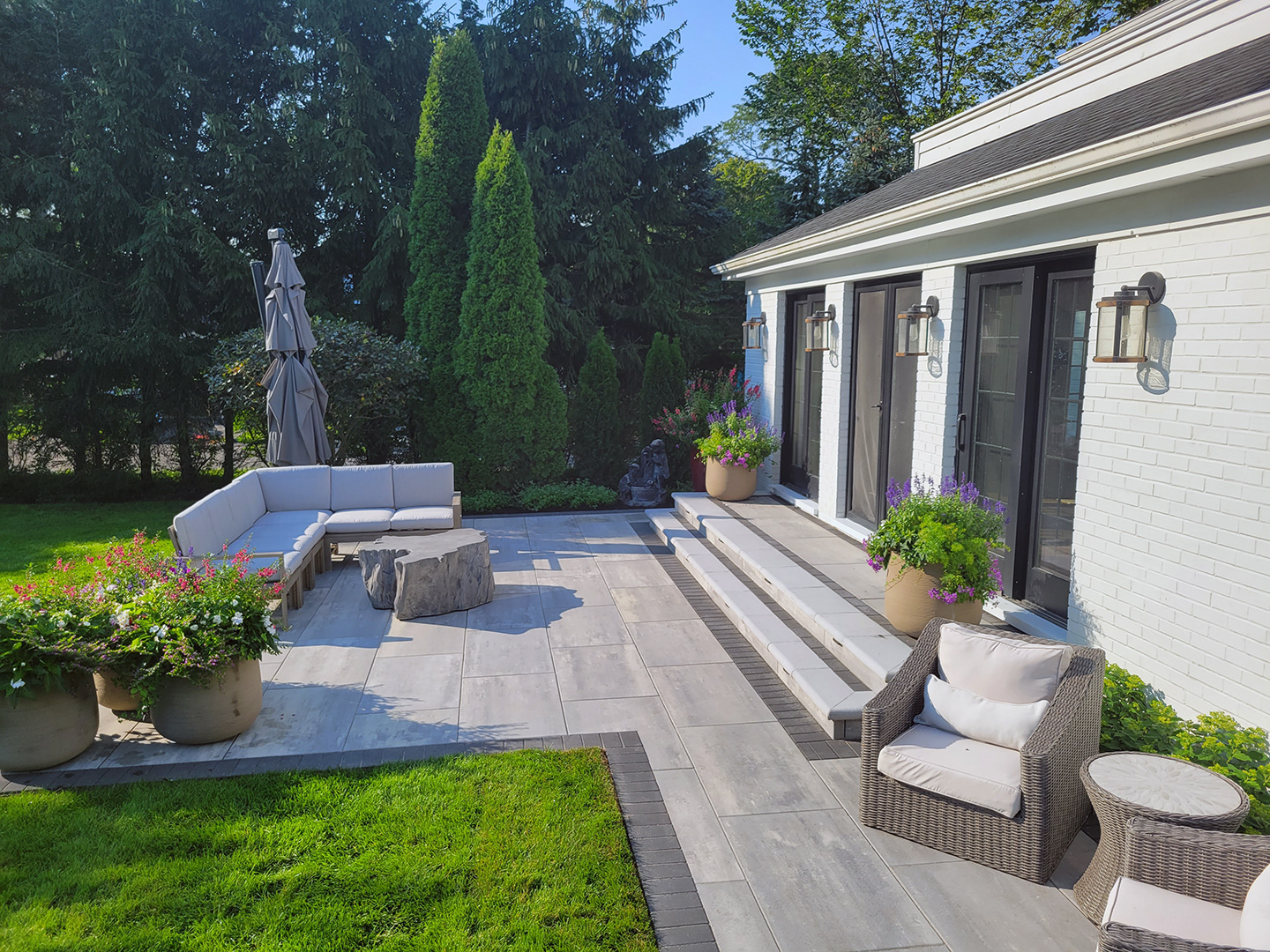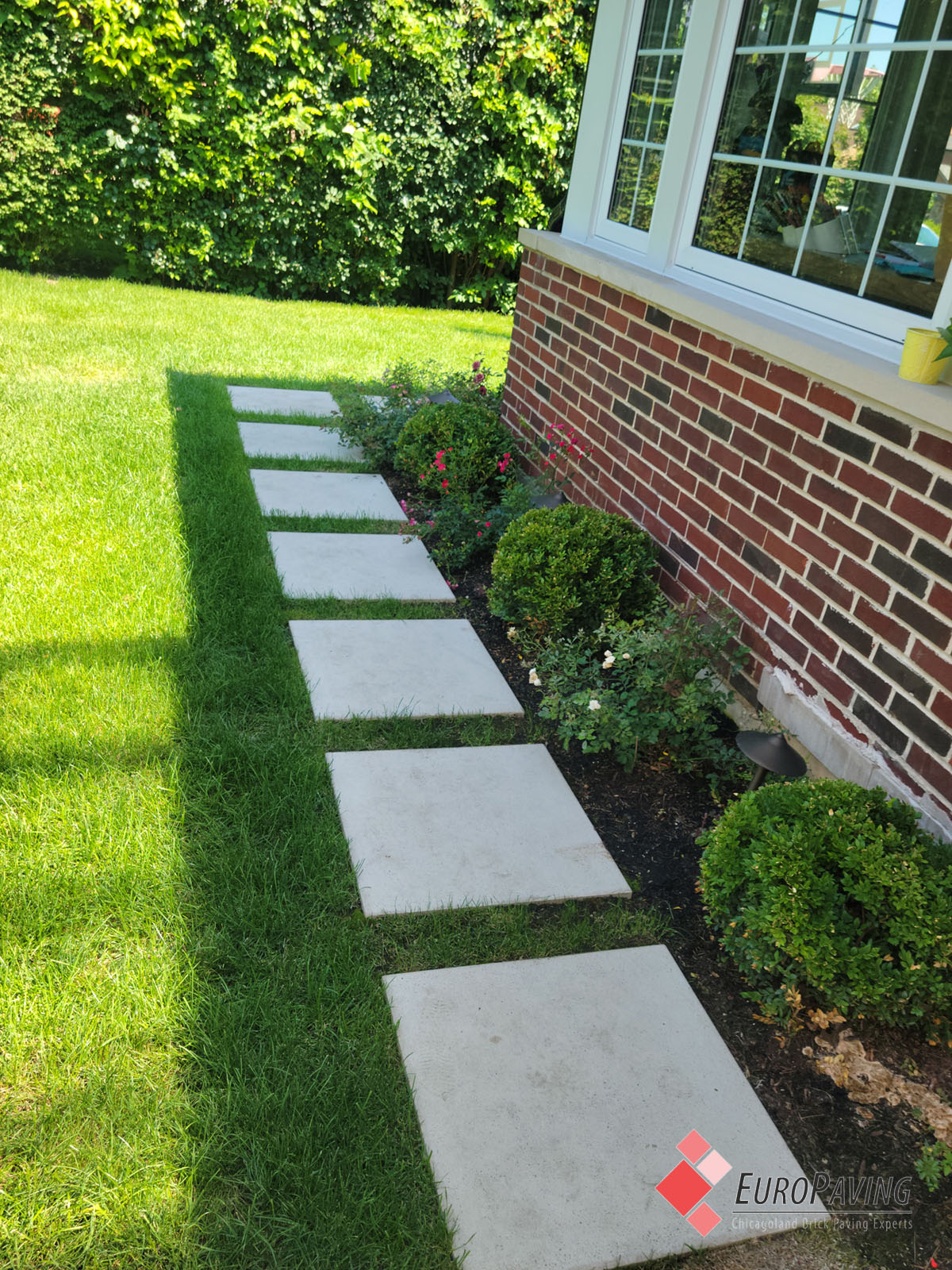No more searching for “stone pavers near me”! Stone patios, stone driveways, and stone walkways are all classic choices for outdoor spaces . They’re tough and stylish, but to keep them looking their best, a little care goes a long way. Regular maintenance isn’t complicated (trust us, we are literally called “Euro Paving”) and can save you from bigger problems down the road. From simple cleaning to protecting against stains, we’ll share some easy tips to help your stone pavers stay beautiful for years to come.

Regular Cleaning is Key:
- Sweep Regularly: Prevent dirt, leaves, and other debris from accumulating by sweeping your pavers regularly. This simple yet crucial task removes loose particles that can scratch the paver surface or clog joints. Regular sweeping also helps prevent stains, as dirt and grime can penetrate the paver’s pores if left unattended. It’s recommended to sweep your pavers at least once a week, or more frequently during periods of heavy leaf fall or outdoor activity. For larger areas or when dealing with stubborn debris, a push broom can be more efficient. Be sure to sweep in the direction of the paver joints to prevent sand and dirt from accumulating in them.
- Power Washing: For deeper cleaning, a power washer can effectively remove stubborn stains, mold, and mildew. However, excessive pressure can damage the pavers, so it’s essential to use the correct settings and nozzle. Consider hiring a professional power washing service for the best results, especially for large areas or intricate paver patterns. If you decide to tackle the job yourself, start with a lower pressure setting and gradually increase it as needed. Always maintain a safe distance between the power washer nozzle and the pavers to prevent damage. For delicate pavers or intricate patterns, consider using a lower pressure setting and a fan-shaped nozzle to minimize the risk of damage.
Protecting Your Investment:
- Sealing: Applying a high-quality sealer to your pavers is a crucial step in protecting them from stains, moisture, and fading. The sealant creates a protective barrier that repels water and other liquids, making it easier to clean up spills and preventing the absorption of stains. It also helps to enhance the paver’s color and overall appearance. Choose a sealer specifically designed for pavers and follow the manufacturer’s instructions for application. Reapply the sealer every 2-3 years, or as needed, to maintain its effectiveness. For optimal results, consider sealing your pavers shortly after installation to ensure maximum protection from the elements.
- Joint Sand: Joint sand plays a vital role in the stability and appearance of your paver installation. Regularly inspect the joint sand and replenish it as needed. Joint sand helps to prevent weeds from growing between the pavers and provides stability to the entire paver system. It also enhances the overall aesthetic appeal of your paver surface. Choose a polymeric joint sand that is specifically designed for outdoor use and follow the manufacturer’s instructions for installation. To ensure proper installation, wet the joint sand before spreading it to help it adhere to the pavers. Allow the sand to dry completely before applying a sealer for optimal results.
Addressing Common Issues:
- Stains: Despite your best efforts, stains can occur. For tough stains like oil, grease, or paint, use a specialized paver cleaner designed to remove these substances without damaging the pavers. Always test the cleaning solution in an inconspicuous area before applying it to the entire stain. For stubborn stains, you may need to repeat the cleaning process several times or seek professional help. Avoid using harsh chemicals or abrasive cleaners, as they can damage the paver’s surface. For organic stains like mold or mildew, a solution of bleach and water can be effective. However, always wear gloves and ensure proper ventilation when using bleach.
- Mildew and Mold: In damp climates or areas with limited sunlight, mildew and mold can grow on pavers, creating unsightly black or green spots. To remove mildew and mold, clean the affected area with a solution of bleach and water. Mix one part bleach with three parts water and apply the solution to the moldy area using a stiff brush. Allow the solution to sit for 10-15 minutes before rinsing thoroughly with water. Always wear gloves and ensure proper ventilation when using bleach. To prevent recurring mold and mildew, improve air circulation in the area by trimming nearby plants or installing fans.
- Lifting Pavers: Lifting pavers can be caused by frost heave, erosion, or improper installation. If you notice lifting pavers, it’s important to address the issue promptly to prevent further damage. Contact a professional paver installer to assess the situation and recommend the appropriate solution. In some cases, resetting the pavers and compacting the base material may be necessary. To prevent future lifting, ensure proper drainage around the pavers to prevent water accumulation. Consider installing drainage channels or directing water away from the paver area.
By following these maintenance tips, you can extend the life of your stone pavers and ensure they remain a beautiful and functional feature of your outdoor space.

Stone Pavers Near Me: Trust Euro Paving for Chicago Pavers




